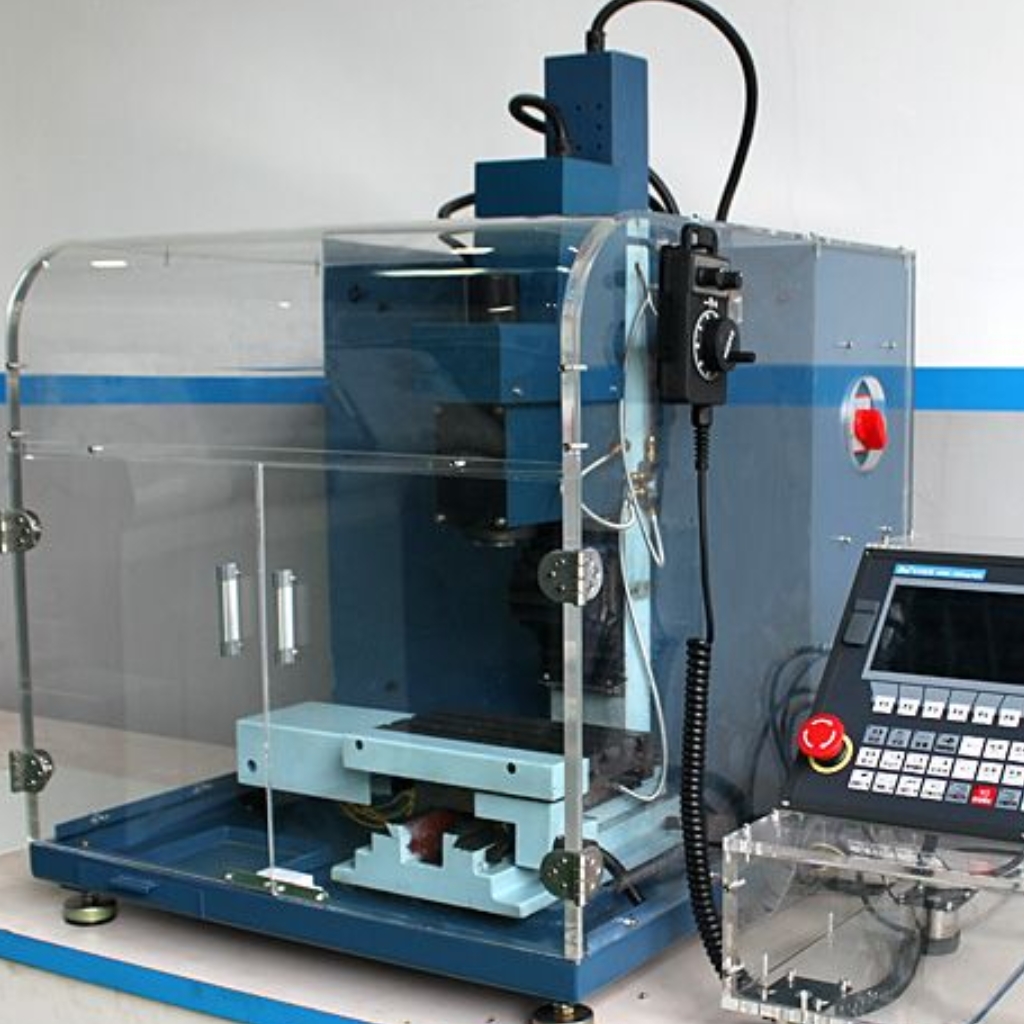Blog
Xendoll has 22 years of experience in the production of small machine tools. We will help you choose the suitable machine and share our experience in CNC machining with you.
 Oct 24, 2025
Oct 24, 2025

 329
329
The lathe is a cornerstone of workshops worldwide, from professional machine shops to the benches of dedicated hobbyists. It's a tool of immense capability, allowing for the creation of precise, symmetrical parts out of metal, wood, and plastic. But this power comes with a significant question: Are lathes dangerous? The short answer is yes, lathes can be extremely dangerous if operated without proper knowledge, respect, and safety precautions. However, with the right awareness and practices, they are powerful tools that can be used safely and effectively every day.
This article delves into the specific risks associated with lathe operation and outlines the essential safety measures that every user—from educational institutions to machining enthusiasts—must follow.

A lathe's danger lies in its high-speed rotational force and exposed moving parts. The primary hazards can be broken down into several key areas:
1. Entanglement and Rotating Parts:
This is the most severe and immediate risk. Loose clothing, gloves, long hair, or jewelry can instantly be caught by the rotating chuck, workpiece, or lead screw. The machine's torque is powerful enough to pull an operator in, leading to catastrophic injuries or fatalities. Never wear gloves while operating a lathe, as they can reduce sensitivity and increase the risk of being caught.
2. Flying Chips and Sharp Swarf:
During the cutting process, lathes produce sharp, hot metal or wood chips at high speeds. These can cause serious eye injuries or lacerations. Furthermore, the long, stringy swarf produced from certain materials like steel can be razor-sharp and easily entangle hands and arms, pulling them into the machine.
3. Improper Workpiece Security:
A workpiece that is not securely clamped in the chuck or between centers can become a deadly projectile if it comes loose at high RPM. Even a small, lightweight piece of metal can cause severe injury when ejected with the tremendous force generated by the lathe's spindle.
4. Contact with Cutting Tools:
The cutting tool itself is a hazard. A poorly secured tool post or a tool that slips from its holder can lead to breakage or the tool being wrenched from the operator's hand. Hands and fingers are always at risk of coming into contact with the sharp, stationary cutting tool during setup, measurement, or cleaning.
5. Electrical and Mechanical Hazards:
Like all powerful machinery, lathes present risks of electric shock from faulty wiring. Additionally, mechanical failures, such as a chuck key left in the chuck, can lead to the key being thrown violently the moment the machine is turned on—a classic and sadly common accident.
Knowing the risks is the first step; mitigating them through disciplined practices is the key to safe operation. Here is a comprehensive safety checklist:
Personal Protective Equipment (PPE) is Non-Negotiable: Always wear safety glasses or a full-face shield. Use hearing protection for prolonged operation and sturdy, closed-toe shoes. Tie back long hair and remove all jewelry and loose-fitting clothing.
Secure the Work Environment: Ensure the workpiece is mounted securely and the chuck key is removed before starting the lathe. The tool rest should be properly positioned and locked down.
Mind the Speed: Select the appropriate RPM for the material and diameter of your workpiece. Starting at too high a speed for an unbalanced piece can cause violent vibrations and failure.
Stay Focused and Present: Never leave a running lathe unattended. Avoid distractions and do not operate machinery if you are tired or under the influence of medication that causes drowsiness.
Use the Right Tools: Employ proper tool holders and sharp, well-maintained cutting tools. Dull tools require more force and can chatter, increasing the risk of accidents.
Clean as You Go: Keep the work area clean. Use a brush to clear away chips, never your hands. Carefully manage long swarf by stopping the machine and breaking it off with pliers.

So, are lathes dangerous? They are powerful tools that demand respect. The danger is not inherent in the machine itself, but in a lack of preparation, knowledge, and vigilance. The difference between a safe, productive session and a life-altering accident lies in the operator's unwavering commitment to safety protocols.
At XendollTools, we design our mini lathes and machine tools with the user's safety in mind, but the ultimate safety mechanism is an informed and cautious operator. Whether you are a mechanical distributor supplying equipment to industries, an educational equipment dealer outfitting a school workshop, or a dedicated machining hobbyist in your home garage, promoting and practicing these safety principles is paramount. Embrace the power of the lathe, but never underestimate its potential. Stay safe, stay informed, and create with confidence.



 Show all our samples
Show all our samples
 Provide you with a free quote
Provide you with a free quote
 Answer all the questions you may have
Answer all the questions you may have
 Guided installation and other options
Guided installation and other options